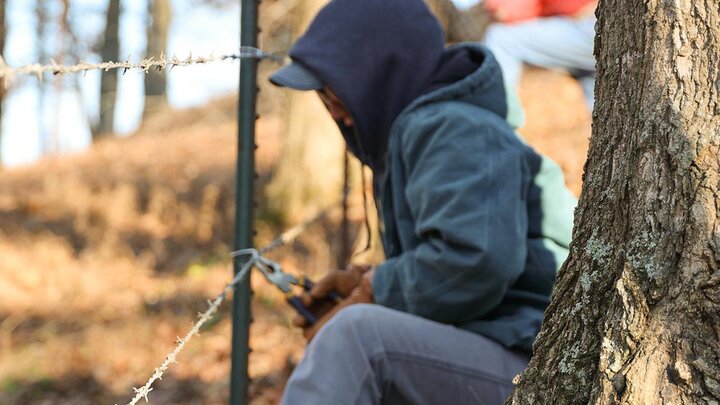Nebraska Fencing Law
Livestock owner responsibility
Nebraska livestock owners are required to use reasonable care to prevent their livestock from escaping the owner’s control. Nebraska livestock owners are liable for any damage their trespassing livestock cause when the owner does not use reasonable care to prevent livestock trespass. Nebraska law does not specifically require livestock owners to fence their livestock in, but that often is the most reasonable and practical way to prevent livestock trespass.
Shared Property Lines
A general rule of thumb used by Nebraska landowners to establish or maintain shared fence lines is to meet in the middle of the boundary and have each individual look to the right to identify their responsible portion. The part of the fence line to the individual’s right is the portion of the fence line the landowner would either establish or maintain.
According to current fence laws in Nebraska, landowners are required to equally split the cost of establishing and maintaining a fence to divide their properties unless otherwise agreed upon. Property line fences are not required if neither neighbor wants the fence. However, if one neighbor wants a fence, the fence builder can require the neighbor to pay half the cost of the fence (NRS §34- 102).
If the fence builder is going to pay for the fence, the statute does not restrict the type of fence built. But if the fence builder wants the neighbor to be responsible for half the fence, the fence must be at least four wires, at least number nine fencing wire and attached to posts no more than one rod (16.5 feet) apart, with a post or stake between every two posts. Barbed wire may be used, but is not required. The fence must be at least 4.5 feet high, with no more than one foot between the wires, measured from the top. If the neighbors both agree, a different type of fence may be constructed (NRS §§34-102(2),-115(5),-116).
If both neighbors do not agree on paying for the fence you intend to build, maintain or repair, you must formally serve written notice upon the neighbor that you are going to build, maintain or repair the fence. You should obtain legal assistance here. If the neighboring landowner does not live on the land, you must serve the notice to whoever lives there or the owner's agent (probably a tenant). The written notice must request that the neighbor either build, maintain or repair his/her portion of the fence, or else pay you for doing so. After the written notice has been served, you may begin fence construction, maintenance or repair (unless you have requested that the neighbor do so instead of you) (NRS § 34-112.02(1)(2)).
You do not need permission to go on to your neighbors land to the extent reasonably necessary to build, maintain or repair the fence. However, you cannot remove trees, buildings, personal property or other obstacles without either (1) the neighbor's permission, or (2) a court order (NRS §34-112.01).
In some cases, disputes may arise between landowners on where the original boundary fence was. A property line survey may need to be conducted to establish the official property line before rebuilding fence lines. If, however, both neighbors agree where the original fence line was located, they may agree to locate the new fence on the old fence line. If either neighbor is contemplating sale of their land, a survey may be desirable before rebuilding the fence if time permits.
Disaster Assistance
Emergency Conservation Program (ECP)
ECP is administered by the U.S. Department of Agriculture (USDA) Farm Service Agency (FSA). This program provides emergency funding and technical assistance to farmers and ranchers to rehabilitate farmland damaged by natural disasters. ECP provides cost-share payments for approved emergency conservation practices including but not limited to restoring fences. Cost share is up to 75% of the cost for emergency conservation practices, up to 90% for limited resource, beginning farmer/rancher and socially disadvantaged producers, but is limited to $500,000 per person or legal entity per disaster.
In order to qualify for ECP cost share payments you must apply prior to taking action to repair damages. FSA is required to comply with applicable environmental laws, regulations and procedures before ECP-related work can begin. The agency does have some streamlining provisions in place for basic fence repair applications. You must maintain receipts for the work, along with documentation of payment, in order to be reimbursed.
Note that fence replacement must meet minimum standards for cost share eligibility. ECP allows for fence repair without meeting minimum standards at a 25% cost-share level. Contact your local FSA office for more details.
Any work completed prior to approval is subject to an eligibility determination. Contact your local FSA office for more information.D




